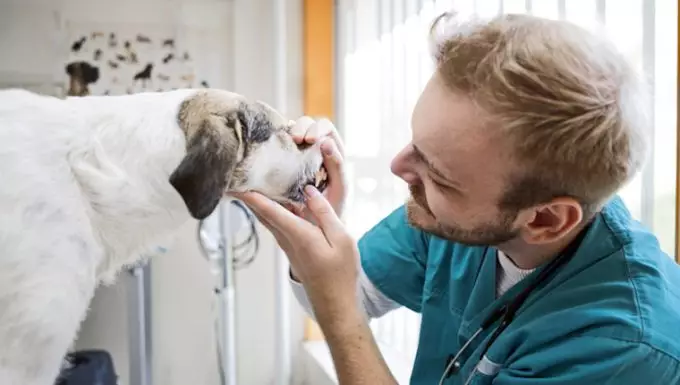Oral chondrosarcoma is a rare yet significant form of cancer that arises from the cartilage tissue located in a dog’s mouth. While it is not commonly encountered, its incidence tends to rise among larger dog breeds, making it a condition primarily observed in them compared to smaller counterparts. Additionally, the disease predominantly affects middle-aged and older dogs, highlighting a concerning trend that emphasizes the need for vigilance among pet owners as their dogs age.
Although the exact causes of oral chondrosarcoma remain elusive—classified as idiopathic—certain trends have been observed. Notably, large breeds, such as Great Danes and Rottweilers, exhibit a higher incidence of this condition. Furthermore, epidemiological data suggests a propensity for males to develop this disease more than females, underscoring the influence of breed, age, and sex as crucial risk factors. Understanding these parameters is essential for owners, as it can lead to earlier detection and intervention.
Early recognition of symptoms linked to oral chondrosarcoma is vital for improving treatment outcomes. Common indicators include persistent bad breath, which might be accompanied by excessive drooling, weight loss, and difficulty eating. A pet may also experience lethargy, swollen lymph nodes, and unusual coughing or sneezing. In severe cases, bleeding from the mouth may occur. Observing these signs and seeking veterinary attention promptly can significantly improve diagnosis timing and therapeutic success.
Upon noticing symptoms, the first step is contacting a veterinarian. The diagnostic process typically involves several critical steps, beginning with an inquiry into the dog’s symptoms and comprehensive medical history. Given that some breeds may have predispositions to certain health conditions, this aspect is particularly important. A thorough physical examination will likely follow, often supplemented with X-ray imaging to visualize any skeletal anomalies. Tissue samples may also be analyzed to establish a definitive diagnosis, ensuring that the treatment path is appropriate for the specific type of tumor present.
Typically, the primary treatment for oral chondrosarcoma is surgical intervention aimed at tumor removal. In some cases, this may necessitate the removal of portions of the jaw, which can be daunting for both pet and owner. Post-surgery, the emphasis shifts to recovery, where managing pain through prescribed medication becomes paramount. Ensuring that medication regimens are strictly followed—including dosing and frequency—is crucial for effective pain management. Additionally, creating a calm and quiet environment during recovery is vital, as is fostering a gradual return to normal activity levels.
Managing oral chondrosarcoma in dogs necessitates a keen understanding of the condition, from its risk factors to symptom recognition and treatment protocols. Preparedness and awareness can significantly influence outcomes for affected dogs. Pet owners play a pivotal role in observing behavior changes and ensuring that their furry companions receive timely veterinary care. Ultimately, a combination of vigilant monitoring, proactive veterinary engagement, and supportive home care can lead to favorable recovery experiences.

